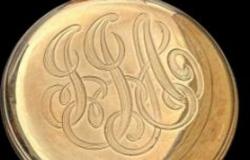“Stop all traffic on the Key Bridge,” it said.
This brief command from an agent in Baltimore’s busy commercial shipping port was one of the first warnings of the disaster. A disaster that experts now predict will change the entire shipping industry on the US East Coast, as well as the way ships and bridges function around the world.
When the cargo ship Dali lost its engine power on Tuesday, there was little time to act. In those minutes, many people – from the ship’s crew, who sent out a distress signal, to the traffic police officers, who stopped traffic heading to the Francis Scott Key Bridge – did what they could to avert a catastrophe, causing probably many lives have been saved.
But no matter what everyone did, several factors made catastrophe all but inevitable. When a ship of such size loses engine power, little can be done to correct its course; even dropping anchor doesn’t help. And the Key Bridge was particularly vulnerable. As early as 1980, engineers had warned that the bridge could never survive the impact of a container ship due to its design.
The collision and subsequent collapse of the bridge caused seven road workers and a police inspector who could not be warned and removed from the bridge in time to end up in the water; two people were rescued, but four others are still missing and presumed dead. Two bodies were already recovered on Wednesday, authorities said.
The ship’s 22 crew members, all from India, who had prepared for a long journey to Sri Lanka, were also affected by the disaster. Although none were injured, they would be kept on board for more than a day while authorities began their investigation.
The accident, the deadliest bridge collapse in the United States in more than a decade, will have a lasting impact on the Port of Baltimore, with its 8,000 employees, and industries that depend on the port, which is the main U.S. hub for automobiles and other rolling stock. Pete Buttigieg, the US Secretary of Transportation, said this on Wednesday. “The impact of this collision is difficult to overestimate,” Buttigieg said. He compared the Dali in size to an American aircraft carrier. “One hundred thousand tons, all on that pier at the same time,” he said of the impact on the bridge’s supporting structure.
Officials from the National Transportation Safety Board, which is leading the investigation into the accident, boarded the Dali Tuesday evening to gather documentation. They retrieved data from the travel data recorder, the equivalent of an airplane’s black box, in hopes it could help investigators determine what led to the accident. Buttigieg has said that any private party found liable for the accident “will be held accountable.”
‘Complete blackout’
It was Tuesday, about half an hour after midnight, when the Dali, loaded with cargo containers, left its dock, escorted as usual by two tugboats. On board was a local pilot with more than 10 years of experience and in-depth knowledge of the Port of Baltimore, as well as a pilot in training. The sky above the Patapsco River was clear, illuminated by a full moon.
At 1:25 a.m., after the two tugs had been disconnected and turned back, the Dali had accelerated to about 6 miles per hour. It was approaching the Key Bridge. And then the ship’s powerful propulsion system stopped. The lights went out. The ship suffered a “complete blackout,” said Clay Diamond, head of the American Pilots’ Association, which was briefed on the Dali pilot’s report.
The pilot noticed that the ship began to veer to the right, toward one of the pillars supporting the Key Bridge. He urged the captain to try to get the engine going again and ordered the crew to steer hard to the left. As a last resort, he ordered the crew to drop the port anchor.
The crew sounded the alarm at 1.27 am. One of the tugboats, the Eric McAllister, turned around and hurried back to the ship. But the disruptions on board piled up. The emergency generator was switched on, causing a thick cloud of smoke to come out of the exhaust and the lights, radar and controls worked briefly again. However, to no avail. Without propulsion, the 95,000-ton ship had become an unstoppable object, and that object was now drifting toward one of Baltimore’s busiest bridges.
On land, Maryland Transportation Authority officers quickly took action. “I need one of you on the south side and one of you on the north side, hold all traffic on the Key Bridge,” can be heard on the audio recording of radio traffic that evening. “A ship is approaching that has just become rudderless. Until they get that under control, we have to stop all traffic.” Vehicles were stopped on either side of the bridge as the ship continued its inexorable drift toward the 1.6-mile bridge.
The officers then turned their attention to a number of workers, many of them immigrants from Guatemala, Honduras, El Salvador and Mexico, who were still working on the bridge in the chilly darkness. “There’s a team over there,” an officer says on the audio recording. “Maybe you can notify the foreman and see if we can get them off the bridge temporarily.”
But then the impact came. Almost immediately the pillar buckled and collapsed. The rest of the bridge then collapsed. She broke into pieces and fell into the dark water.
“The size and weight of such ships makes them very difficult to stop, even with propulsion,” said Stash Pelkowski, a professor at the State University of New York Maritime College and a retired Coast Guard division admiral. Without propulsion, he says, “there was very little the pilot or crew on the Dali could do.”
The collapse happened in seconds. The span collapsed into the icy river at 1:29 a.m., all that remained of the bridge were stubs of the piers. “Central, the entire bridge has collapsed!” an officer shouted. “Everyone, the whole bridge just collapsed.”

Known risk
Wandering ships have long been seen as a risk to the Key Bridge. Just a few years after construction was completed in Baltimore in 1977, the Sunshine Skyway Bridge in Florida’s Tampa Bay was struck by a ship. 35 people were killed.
Officials acknowledged that the Key Bridge would not be able to withstand a hit from a heavy freighter. “I would say if that ship were to hit the Bay Bridge or the Key Bridge, and I mean if it hit the main supports, a direct hit, the bridge would collapse,” said John Snyder, Toll Facilities technical director Administration, at the time The Baltimore Sun. But building a bridge that could withstand such an impact was not economically feasible, Snyder said. When the bridge was built, freight ships were not as large as they are today. A much smaller freighter hit the bridge in 1980 and then it held.
Minutes after the bridge collapsed, both tugboats that had escorted the Dali arrived on the scene, quickly followed by the Coast Guard and the first units of the Baltimore City Fire Department. Two of the workers who had been working on the bridge were pulled from the water, but the others could not be found.

Jack Murphy, owner of Brawner Builders, the company the workers worked for, received a call about the collapse and rushed to the scene of the accident, about a 30-minute drive from where he was. Coast Guard boat and diving crews were already combing the water in search of the missing workers. He stayed at the bridge all night and eventually began calling the men’s families.
The bodies of two workers were discovered in a red pickup truck near the bridge rubble, police said Wednesday. They were identified as Alejandro Hernandez Fuentes, 35, an immigrant from Mexico, and Dorlian Ronial Castillo Cabrera, 26, a native of Guatemala.
About two miles from the bridge, Andrew Middleton was awake when he heard the crash. At first he thought it was thunder, maybe a low-flying plane. The sound lasted about 30 seconds. When he woke up a few hours later, he saw the news about the collapsed bridge. “I thought: I was with those guys yesterday,” he says.
Middleton, who runs Apostleship of the Sea, a program that helps sailors coming into port, had taken the ship’s captain and some crew members to Walmart on Monday to stock up on supplies for the 28-day voyage ahead: toothpaste, snacks, clothing, Bluetooth speakers. He remembers the captain telling him that their next port was Sri Lanka, but that they were taking a longer route, around South Africa, to avoid the recent Houthi attacks on cargo ships in the Red Sea. He remembers saying goodbye to the crew members and “God bless” said. Middleton said he immediately sent a WhatsApp message to the crew after hearing the news on Tuesday. “They responded within a few minutes and said everyone was OK,” he said.

‘It will change a lot’
Firefighters and rescue workers in diving gear swarmed around the bridge, followed by news crews. John McAvoy, owner of a nearby restaurant, shared hot meals – chicken, crab balls and… pretzel bites – out to the workers.
By nightfall, authorities called off rescue efforts and said they were now searching for bodies. “The water is deep, visibility is poor, it’s as cold as I-don’t-know-what,” said Kevin Cartwright, a fire department spokesman. The US Army Corps of Engineers said it is mobilizing more than 1,100 specialists to clear the bridge wreckage and unblock the Port of Baltimore shipping lane. In the meantime, the East Coast must rely more on ports outside of Baltimore, Buttigieg says.
McAvoy believes the tragedy will reverberate through the port for years to come. For example, fishermen always went home by following the Key Bridge. “It will change a lot of things for a lot of people,” McAvoy said.
© The New York Times










